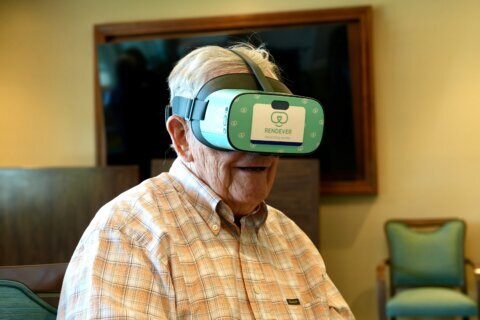
The solar eclipse is set to take place April 8 — there are watch parties planned, concerns about traffic and plenty of warnings about how to safely view the celestial event.
What do you need to know about the safety features of those special glasses everybody has been buying? And how will NASA study the sun during the unique event?
Sten Odenwald, with NASA’s Heliophysics Education Activation Team, joined WTOP’s Shawn Anderson and Anne Kramer to help shed some light on what to expect during the eclipse.
The full interview is below.
The transcript below has been lightly edited for clarity.
Anne Kramer: We are just days away from the solar eclipse. There are watch parties planned, concerns over traffic in places where there will be a total eclipse — and warnings to not look directly at the sun during the eclipse. But what about taking pictures from your phone?
Shawn Anderson: Here to help us better understand that and offer some other advice and warnings is Sten Odenwald. He is part of NASA’s heliophysics education activation team. Thank you so much for being with us today. We really appreciate it.
Sten Odenwald: Yeah, this is all very exciting.
Shawn Anderson: Absolutely. We are a world of selfie takers these days. So what is it we should know about using our phones to take photos of the solar eclipse?
Sten Odenwald: Smartphone cameras are very, very sensitive cameras these days. I mean, the last few generations are just incredible. So, under no circumstances, should you point your $1,000 highly sensitive smartphone at the sun. I think the safest thing to do is to put your eclipse glasses over the selfie lens on your camera and shoot the eclipse over your shoulder. That way you don’t look directly at the sun, you don’t have to worry about squinting, and the camera will automatically focus and do the adjustment as well as it can. But don’t expect to see the corona or anything spectacular. It is, after all, a very small lens. You can even practice on Monday morning taking photos of the sun to get your technique perfected in time.
Anne Kramer: Sounds like some good advice. I remember as a kid — I’m sure Shawn might remember this — using a cardboard box with the pinhole and the cardboard to see the eclipse. We have now graduated to eclipse glasses — you mentioned them. How do we know if they’re safe if we pick them up?
Sten Odenwald: They should have the ISO code on them, which is ISO 12312-2. That means the lens material is certified to protect you from ultraviolet and visual and most of the infrared emission from the sun.
Another way is to look at a very, very, very bright light, like a 100-watt bulb. And if all you see is the filament very barely, then that means they’re probably OK as well. But look for the ice ISO code. That’s the dead giveaway that you got a good pair of glasses.
Shawn Anderson: We noticed on a pair we have here at the station that it states — and this is a quote — “Limit to three minutes of continued use intermittently for several hours.” What is that about?
Sten Odenwald: Well, you know, even the best filters will allow some infrared emission light to come through. Even the ISO filter lets 3% of the infrared light from the sun get through. And that’s enough to go through your eye and heat up your eye a little bit. That’s why as you use these glasses longer and longer, your eyes start to get kind of warm and you start getting kind of uncomfortable. So you know, just look at the sun, occasionally to check that it’s still there. And be satisfied with that. This isn’t a high-resolution movie that you’re watching.
Anne Kramer: Sten, we’re hearing about the NASA scientists that are going to be flying the jets not too far from what’s going on. What are they going to be looking for?
Sten Odenwald: Well, the big mystery is, of course, the corona. And you know, now that we know quite a lot about it, we want to study the magnetic fields and the corona plus the composition. But we’re really limited to like total solar eclipses on the ground, which last about three or four minutes.
What they’re going to do is they have a pair of jets flying at 450 miles an hour down the path of totality … Basically, the eclipse is traveling at 2000 miles an hour. And so they get about six minutes of observing time of the corona as opposed to just three or four.
So that extra few minutes is enough to do some serious science.
More on the solar eclipse:
- What to know about next week’s total solar eclipse in the U.S., Mexico and Canada
- Not in the path of totality? You can still watch Monday’s total solar eclipse online
- Blind people can hear and feel April’s total solar eclipse with new technology
- ‘Don’t damage those eyes’ observing Monday’s solar eclipse, medical expert says
Get breaking news and daily headlines delivered to your email inbox by signing up here.
© 2024 WTOP. All Rights Reserved. This website is not intended for users located within the European Economic Area.







